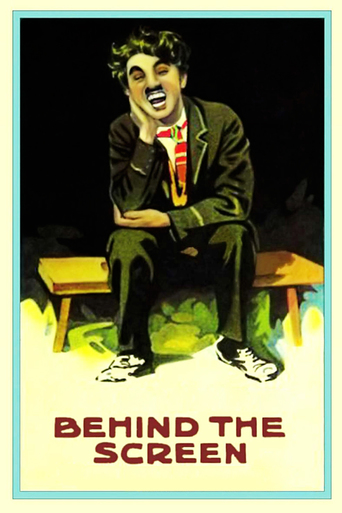



Self-important, over-dramatic, uninspired.
Purely Joyful Movie!
Charming and brutal
Admirable film.
In short I wanted to highlight the wonderful work of the 2013 restoration. I have discovered again this gem that gives a glimpse at old time film studios settings; when noise on set didn't matter, and movies could be shot close to each other.Chaplin surely used his personal experience in this one. Making fun of the artificial magic of cinema. Unlike his firsts silent shorts that only showcases a succession of gags, this one has a decent plot. His chemistry here with co-star Edna Purviance is even better than with Paulette Goddard.I am very found of the bear scene, my favorite. Highly recommended to watch the restored copy, to fully enjoy it as Chaplin intended to show viewers when it was released.
View MoreIt's lowbrow slapstick and they knew it, with one of the actors walking off the set after a pie throwing scene saying, "I don't go for this highbrow stuff."Still, thank God for the pie throwing sequence, for its the only genuinely humorous sequence here - with the two "actors" - Charlie and his senior - going against script and throwing pies at each other out of contempt. Elsewhere there are a few chuckles, Chaplin brushing the bear rug's hair for the sets finishing touches comes to mind, but in the early sequences with the totem pole and the trap door, you can see the jokes coming a mile away. Later in his career - in films like 'Pay Day' and 'City Lights' - to name a couple of examples, Chaplin would set up an obvious trap for a slapstick comedian to fall into, but would cleverly find ways to avoid it, thus maintaining the element of surprise. No such cleverness is present here however, and they fall into that trap over and over again.This kind of silliness is run of the mill for 1910's comedy and Chaplin could have written this stuff in his sleep.
View MoreChaplin's seventh film for the Mutual Film Corporation, which he edited, wrote, directed, and produced, was a satire on his slapstick utilizing his tried and true plot devices of being a put-upon poor soul who finds time for romance while creating chaos. This time the setting is behind the scenes at a film studio. Chaplin again plays an assistant handling props, much like he did in an earlier film. Eric Campbell again plays the Chaplin's browbeating foil. The film even has a risqué joke thrown in for good measure and is centered on the fact that Chaplin romances Edna Purviance while she's dressed as a guy. Chaplin makes a shambles of the film sets with moving a prop column back and forth between different sets while bopping other folks in the head with it. Other highlights include Chaplin gnawing on someone's lunch while alternately munching on bread and a huge pie throwing fight at the end. While there are a lot of funny moments in this film, it does not equal most of his other films for Mutual. **1/2 of 4 stars.
View MoreChaplin plays the part of David, the lowly assistant to the oafish stage hand Goliath, and as is to be expected, everything goes wrong in the most hilarious ways. Being an early short Chaplin comedy, a good portion of the comedy is slapstick, with such elaborately acted scenes as the one with the stage pillar prop that just would not seem to stand up. Poor David works like a slave for the lazy Goliath, but at first, he just keeps messing things up - he just can't seem to do anything right. But later, when he starts working really hard and doing things right, his boss always walks in just as he sits down to rest, and he gets into trouble for loafing on the job, and Goliath, who spends most of his time sleeping, gets all of the credit for David's work.Not only does this film satirize the falsity of film and stage, but it also goes into actual filming, in the surprisingly effective pie throwing scene. Eventually, all of the workers go on strike, leaving only David and Goliath on stage and, as is common in Chaplin's films, he ends up the victor as a result of some inadvertent events concerning a trap door and a lot of guys fighting. The ending of this film is unusually violent for a generally light Chaplin comedy, but the comedic value is never diminished.
View More